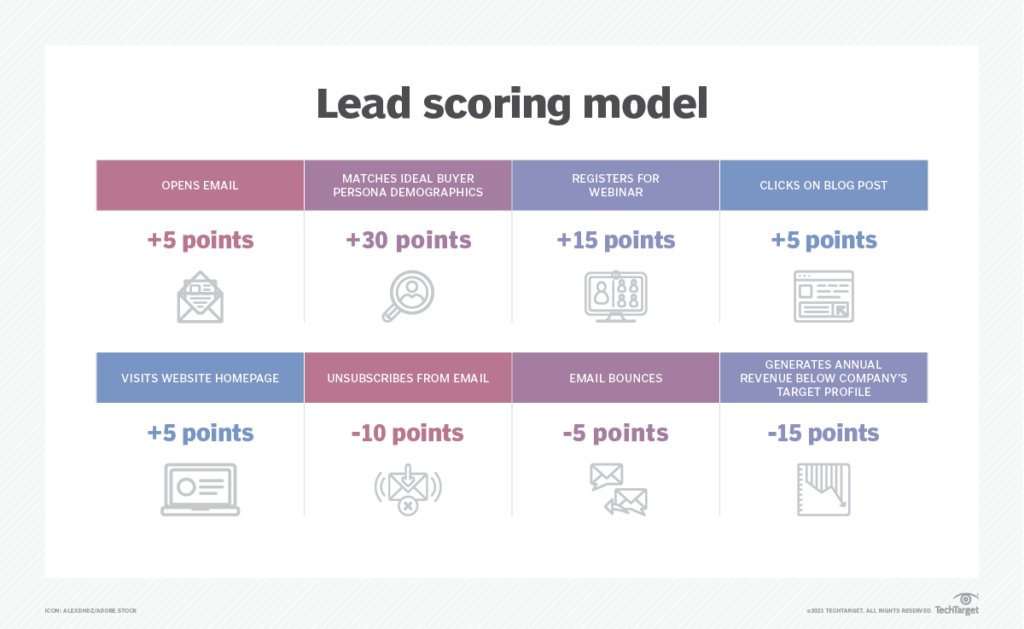Marketing Qualified Lead vs. Sales Qualified Lead: The Simple Truth

Leads are the lifeblood of B2B. When you’re selling high-value business solutions, every purchase counts. The only way to keep the revenue stream flowing is to find viable leads for your sales team. The leads you want to focus on have already shown some interest in purchasing, categorized as either Marketing Qualified Leads (MQLs) or Sales Qualified Leads (SQLs).
Everybody agrees that the key distinction between MQLs and SQLs is that SQLs are more interested and prepared to purchase than MQLs. The problem in determining which is which comes in quantifying the “more” and having a clear, reliable way to determine when that threshold has been crossed.
When nearly three-quarters of the leads B2B companies pull in aren’t sales-ready, categorizing them correctly isn’t just a philosophical debate. Handing a lead over to sales prematurely wastes everybody’s time, and leaving purchase-ready leads in the mid-funnel marketing stage puts you at risk of losing them to your competitors.
Fortunately, sorting your leads out doesn’t have to involve inaccurate guesswork. This post will cover the most meaningful differences between types of leads, look at ways to turn MQLs into SQLs, and get to the simple truth behind it all.
What are Marketing Qualified Leads (MQLs)?
For B2B marketing purposes, a Marketing Qualified Lead (MQL) is a business connection that exhibits the characteristics of a potential buyer from your organization, but not in the short-term.
A B2B MQL can be identified by how they meet three criteria:
1. The lead must match your Ideal Customer Profile (ICP). An ICP is a marketing profile created to identify the ideal customer who gains the most from your product or service. Your ICP aids in developing targeted sales and marketing plans and locating the best qualified prospects, increasing profit for your company.
2. The lead must work at a company matching your targeted firmographics. Similar to how demographic information on individual customers in B2C defines each consumer, firmographic data describes the features of your potential client’s organization. The goal of collecting firmographic data is to find the organizations that need and/or purchase your product or service.
3. The lead should be demonstrating interest in your product or services. This intent is most often revealed by engaging with your content marketing, and their subsequent behaviors. An ordinary lead might visit your website and click on a few pages. A potential MQL reveals itself by going a little further: downloading a whitepaper, signing up for a newsletter, or emailing a query.
Ultimately, the exact factors that determine an MQL for each organization are different. What is the same is that calling a marketing lead “qualified” means they have demonstrated stronger indications of sales-readiness relative to your other leads. Qualification incorporates factors from the ICP, firmographics, and intent level, and involves a lead scoring process, which we will discuss in-depth shortly.
Once an MQL is identified, the goal is to nurture them with content appropriate for the current phase of their buyer journey, then convert them to Sales Qualified Leads.

What are Sales Qualified Leads (SQLs)?
When a lead shows enough interest in purchasing that they can be handed off to your sales team to close, they’re considered an SQL. But how can you determine if their interest is the proper level? The answer is to use a lead qualification framework—a systematic, standardized set of methods for selecting which leads to qualify.
In this case, the ideal framework to employ is BANT. Created by IBM in the 1960s, BANT aims to define four standards for an SQL:
- Do they have the money in their Budget to make this purchase?
- Does your lead have the Authority to approve this purchase?
- Does your lead Need this purchase to solve a problem?
- What is the most likely purchase Timeline?
An SQL should show that they want to buy from you and that they can. Verifying their need for your product, purchasing authority, and budget is essential to identifying an SQL. Meeting these criteria is a requirement, but it’s not enough on its own.
The best indications that a lead is sales-ready are when the frequency of their communication with you increases, their inquiries are specific, and they want to get into pricing details. In other words, if they start asking questions that your sales team is best equipped to handle, that’s a sure sign that they’re an SQL. However, not every lead will send such clear signals when they shift to a purchase-ready footing.

How to Tell an MQL from an SQL
An MQL may be interested in your product, but an SQL is actively looking to finalize a purchase. One way to tell them apart is to evaluate each lead manually based on what you know about their interactions with your company. An SQL has deeper intent and readiness to buy but also is more engaged with your sales team.
For certain larger deal sizes, the SQL will have already been qualified by a sales qualification team during a “Discovery” call, which occurs after a potential customer expresses interest. During this call, the sales team has a chance to learn about the buyer’s concerns, priorities, and objectives, and start developing a relationship of trust. The purpose of this conversation is to evaluate fit through a series of inquiries before advancing the buyers through the sales process.
Most businesses that separate their SQLs from their MQLs use a lead scoring process. Lead scoring involves assigning point values to a lead’s actions and firmographic characteristics. If they reach a specific predetermined score, the lead “graduates” from MQL to SQL.
Every B2B company has its own unique customer base, so the specific lead scoring framework that works for one company won’t necessarily make sense for another. However, there are three prerequisites to becoming an SQL: need, budget, and purchasing authority. Once those have been verified, direct communications are the next strongest indicators of readiness to purchase. You are looking for questions about features, pricing, hardware requirements, and other details that only become relevant when a purchase is imminent.
In the absence of clearly communicated indicators, you have to infer the buyer’s intentions by looking at how they’re engaging with your content. One of the most effective ways to do this is by using automated tools that track leads as they interact with your website and social media, mapping out their entire buyer journey in detail. If your content marketing is up to the task, you can see MQLs transform into SQLs in real-time, allowing for a perfectly-timed handover to your sales team.

How to Turn MQLs into SQLs
In theory, a strong marketing campaign should make MQLs turn into SQLs on their own by inspiring them to reach out and contact your sales team. But a marketing campaign that doesn’t address the lead’s priorities will rarely succeed at getting them to the necessary level of interest.
Nurturing leads is the way to get them to step down into the narrow end of your sales funnel and get serious about making a purchase. Essentially, this means keeping track of where your leads are in their journey and being strategic about the content and communications you’re feeding them.
For example, if an MQL has gotten fairly far along in their research and is comparing features and pricing, that’s the wrong time to hit them with top-of-the-funnel content touting the basic functions of your product. Instead, you want to convince them that you have the specific features they need at the right price.
Lead scoring will support your nurturing efforts because it provides many insights into buyer behavior and can reveal areas to target. For instance, if a lead is opening up all of your emails but hasn’t spent much time on your website, you might want to try improving your CTAs.

To get the most accurate lead scores, you must capture as many of their interactions as possible across all channels and platforms. Journey mapping tools that automatically track lead activity wherever it occurs are very helpful here.
Overall, one of the best ways to not miss out on an MQL with SQL potential is to ensure your marketing and sales teams are working in close alignment. Tools and resources that allow them to share timely and accurate customer data are vital to making this possible. This synergy lets your teams target leads with highly relevant, personalized messaging.
MQL vs. SQL: The Simple Truth
The simple truth is that SQLs are the leads that have passed the real qualification test. These leads have met the BANT criteria—they’ve got the Budget and Authority to make a purchase, they have a genuine Need for your product, and the Timing is right. A lead that has been qualified by sales rather than marketing is more likely to result in a sale.
As much as MQLs may show interest in your content and products, there’s no way of knowing if they’ll ever become customers until they meet those conditions. MQLs may surprise you by jumping quickly into purchase mode, but SQLs will always be more likely to turn into a sale. They’ve got a considerably stronger intent to buy, sales and marketing have vetted them, and all the right factors are in place for purchasing.
Transform Your Leads with Journey Orchestration
MQLs and SQLs are both vital to B2B companies, but MQLs need to be nurtured into their higher form before you put the time, resources, and energy of your sales team into courting them. Trendemon’s journey orchestration solution can keep you from missing out on MQLs with potential. By tracking the buyer journey and delivering personalized content that steers leads in the right direction, you can maintain a smart sales pipeline that consistently provides high-quality SQLs. Try a free Trendemon demo and see how it helps keep your pipeline filled.